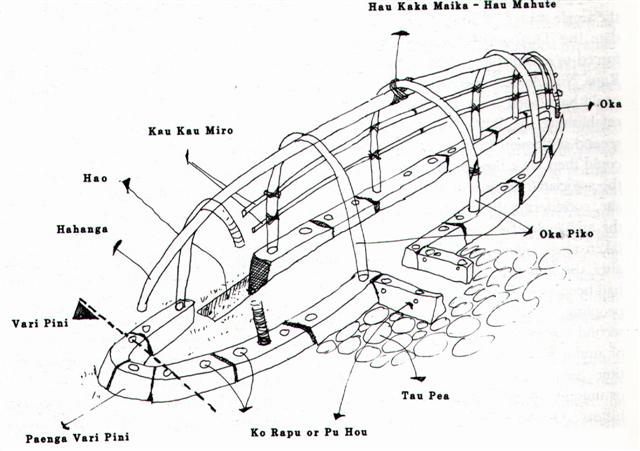6. Let us continue. The holes of Akahanga and Hatinga Te Kohe are on different stones, but they are joined by an arrow with 2 shafts (and a canoeshaped arrow head) and named Ko Rapu:
Presumably the living spirit (manu rere) of Sun goes up into the sky at Hua Reva. Then his body will be buried ('swallowed') at Akahanga, after which his ruler's staff is broken (Hatinga Te Kohe). When his living spirit has left Sun is no longer present for real, only his ghost (rapu) remains (an apparition in the night). The 9th and 10th stations are joined in the concept of Ko Rapu, they are the 2 joined 'tail feathers' of the bird. Next station is Roto Iri Are and this is the beginning of the curve (vari pini) indicating a change of ruler. Number 11 is a place for Saturn. He ignites the new Sun, Tama (number 12), and there is only one hole in this Sun stone - there is only one ruler (only Sun has a single 'leg'). But also station number 13 One Tea is representad by a single-hole stone (maybe to illustrate how the normal 2-hole paega stone has been broken). This hole could represent Sun once again, because his Moon Queen dies here, and then the Sun King will be alone. |
